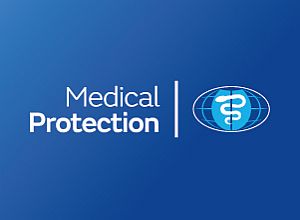Medical Protection has experienced increased interest in the concept known as hospital at home – which raises interesting philosophical and patient safety questions, writes Dr Graham Howarth, Medical South Africa Lead, Medical Protection.
He writes:
To begin with, the term hospital at home appears to be an accepted term not only in South Africa but also in other countries.
The importance of the language that we use cannot be over-emphasised. Hospital at home conjures up thoughts of being in a hospital environment and receiving care equivalent to what one would receive were one in a hospital environment.
Clearly this is not the case – in essence modern technology and telemetry allows for a patient to be better monitored at home, allowing for innovative clinical management, but there are two obvious and clear risks.
First, the dependency on the technology, and second, the absence of face-to-face care and almost immediate assistance should it be necessary.
We also need to consider where a sick patient can be managed.
The dichotomy with hospital versus home based care has been long challenged by the concept of step-down facilities and early discharge to home. In the step-down facility and/or early discharge to home, a patient who was ill will have improved and stabilised and can be discharged from hospital into a step-down facility or directly to home.
The concept is welcomed and well accepted by the medical fraternity and challenges a dichotomous perspective. Even hospital at home sceptics may accept the move from a step-down facility to a hospital at home arrangement – indeed it has been done for many years where patients go home with equipment traditionally used only in hospital.
So as a profession we accept that the binary choice of home or hospital no longer exists.
The concern with hospital at home as opposed to step-down facilities is that patients only move to step-down facilities once they are hopefully better than when they were admitted, but almost definitely more stable than they were in the acute phase.
The perceived risk of hospital at home is that acutely unwell patients whom a doctor would traditionally manage in hospital, are now managed in a home environment dependent upon monitoring by telemetry, remote care with occasional visits, and a reliance on telehealth. It is difficult to argue that there is not increased risk here.
The concept appeals to third party funders as there are savings to be made. patients will be divided, and medical professionals may feel under threat. The first, and unequivocally important question is – is it safe; or asked in the alternative, is it any less safe than conventional hospitalisation of acutely ill patients?
Data from research and the Cochrane database suggest that outcomes are not dissimilar. The important points revolve around patient selection, levels of telemetry and care, and careful monitoring of the process.
Medical Protection has been advised that the concept is not contrary to HPCSA requirements and Medical Protection benefits of membership will extend to members who are adequately educated, trained and experienced to treat the patients in question. Clearly indemnity would not extend to problems with the telemetry.
So what should Medical Protection members do who wish to partake in managing patients in the hospital at home environment?
They should ensure that they are adequately educated, trained and experienced to manage the conditions of patients admitted into the scheme, are cognisant of the proposed clinical conditions that can be treated, and are aware of red flags that would ensure hospital admission.
There is obviously a role for professional societies to opine on admission and exclusion criteria. If there is an increased risk the patient is the individual at risk, and it is important that the patient is fully informed. It would be prudent to have and retain a written informed consent form setting out the risks. Only use providers you trust.
Given this is a new concept it would also be wise to maintain a centralised database of outcomes. Research suggests that the concept is safe, but research tends to be conducted in as near perfect conditions as possible.
In summary, the key advice is: prudent safe protocols, appropriately educated, trained and experienced clinicians, careful patient selection, well informed patients, trustworthy service providers, careful monitoring for any evolving problems, and dynamic monitoring to fine-tune any issues identified, hopefully sooner rather than later.
Medical Protection members who have any concerns in this area can contact us to request advice and support.
See more MPS columns from MedicalBrief archives:
Time for a national compliments portal for the profession?
MPS welcomes ‘essential’ incident and complaint guidance from DoH
Badmouthing colleagues unethical and risks healthcare reputational damage

